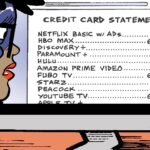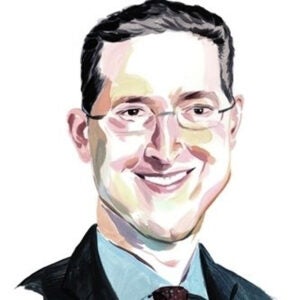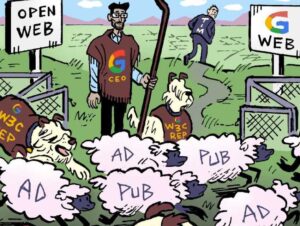When the peer-to-peer site Napster unleashed digital audio on the web, the record industry couldn’t move fast enough. It took about a year and a half for the first major lawsuit to shut the service down. The battle was won, but the war for control over music distribution was irrevocably lost.
Today, the publishing industry is facing its own Napster moment, and I fear we are making the same mistakes. The uncompensated theft of content to train large language models (LLMs) has created an existential crisis. While I am in favor of the promise generative AI brings, the current approach threatens carnage by subsidizing a new content consumption interface that destroys the economic incentives to create original content.
The publishing community’s response has been an uncoordinated chucking of stones at the AI Goliaths. At least the record industry had the Recording Industry Association of America (and Metallica) to bring a unified suit against the peer-to-peer poster child. Publishers, however, lack the tools, mechanics, common language and coordinated approach to address this systemic threat.
The problem is threefold: Many companies are working on solutions; these solutions vary in every aspect from technology to business model; and the AI companies are not even entertaining scaled solutions yet. To make matters worse, the individual licensing deals struck by large publishers undermine the broader effort, as these players are now content to sit out the collective fight.
Publishers must coalesce into a singular front to gain a credible bargaining position and stop the bleeding. From there, we must put the processes in place to actually operate a licensing mechanism (like adding streaming rights to record deals to enable Spotify) and then rebuild our businesses. It took the recording industry nearly 15 years to recover from the upheaval of free music and transform its business model. We have no time to waste.
Three paths to the bargaining table
If we want to compel LLMs into meaningful, scaled licensing programs, I believe there are only three ways to bring them to the table:
- Government intervention: The SEC or DOJ could issue an injunction that orders LLMs to pay for content. While individual lawsuits are helpful, this path is unlikely to be swift, and no group of publishers currently carries the same weight as the recording conglomerates of the Napster era.
- The Google gambit: Google could proactively start licensing content through Google Search Console. This would curry favor with the industry, and publishers could then deploy “hard” blocks against other LLM crawlers, forcing them to adopt a similar licensing model as their access to free content disappears. This would be a quick resolution, but it’s unlikely Google will start handing out checks tomorrow.
- Publisher unity: Publishers could band together to create a crawler-tight wall that prevents all LLMs from freeloading. This collective action would force LLMs to make concessions and engage in scaled licensing programs.
Of the three, this final option is the most likely to succeed, but only if publishers can actually get their act together.
A unified front
Content creation is not a function destined to be made obsolete, like the telegram. It is fundamental. LLM content theft requires a unified front for negotiations. While encouraging conversations are happening in disparate circles, they are not happening with enough coordination or speed.
To help everyone level-set and accelerate a coordinated strategy, I have developed the Generative AI Licensing Matrix. This resource focuses specifically on the companies that are helping publishers develop the defenses and mechanisms required to compel and work with LLMs to license content. It is intended to drive conversations and progress.
The time for isolated actions and wishful thinking is over. We must unify, build our defenses and force the issue before the war for original content is irrevocably lost.
“The Sell Sider” is a column written by the sell side of the digital media community.
Follow Scott Messer and AdExchanger on LinkedIn.
For more articles featuring Scott Messer, click here.


















